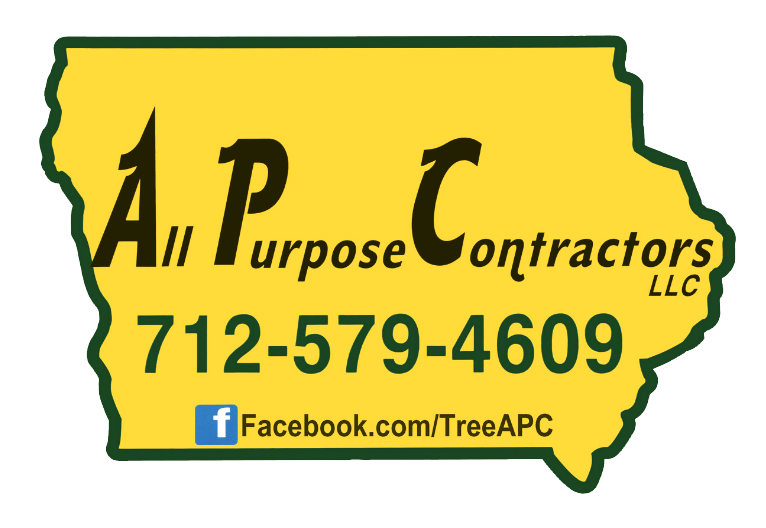FAQs
 We provide high quality efficient tree service to the resi-dents and businesses of our community, performing with integrity, skill and professionalism.
We provide high quality efficient tree service to the resi-dents and businesses of our community, performing with integrity, skill and professionalism.
We are licensed and insured.
You may find better deals but you really want to check if your competing tree service quote provider has insurance to coverage any home damage - we do.
Emerald Ash Borer (EAB)
Emerald Ash Borer (Agrilus planipennis) is a small metallic green invasive wood boring beetle that attacks and kills ash trees. The Iowa DNR and IDALS announced a quarantine for the entire state of Iowa. Emerald Ash Borer (EAB), is native to East Asia and was imported to the Unit-ed States within the wood of shipping crates from China. The adult beetle lives on the outside of ash trees feeding on the leaves during the summer months. The larvae look similar to white grubs and feed on the living plant tissue (phloem and cambium) underneath the bark of ash trees. The trees are killed by the tunneling activity of the larvae under the tree’s bark, which disrupts the vascular flow. Research has shown that EAB can only fly a few miles, which helps slow its natural spread. However, it is easily transported to new areas when people inadver-tently move emerald ash borer larvae inside of infested firewood, ash nursery stock, and other ash items. Please do not move firewood from infested areas into non-infested areas. Trees that have been attacked by EAB can die within 2 years. Iowa DNR Forestry Bureau does not recom-mend using imidacloprid drenching for treating Ash trees for EAB. Source: Iowa DNR
Why Is Topping Bad
Knowledgeable arborists know that topping is harmful to trees and is not an accepted prac-tice. Topping is the indiscriminate cutting of tree branches to stubs or lateral branches that are not large enough to assume the terminal role. The most common reason given for topping is to reduce the size of a tree. Home owners often feel that their trees have become too large for their property. People fear that tall trees may pose a hazard. Topping, however, is not a via-ble method of height reduction and certainly does not reduce the hazard. In fact, topping will make a tree more hazardous in the long term. Topping often removes 50 to 100 percent of the leaf-bearing crown of a tree. Because leaves are the food factories of a tree, removing them can temporarily starve a tree. The severity of the pruning triggers a sort of survival mechanism. The tree activates latent buds, forcing the rapid growth of multiple shoots below each cut. The new shoots grow quickly, as much as 20 feet in one year, in some species. Unfortunately, the shoots are prone to breaking, especially during windy conditions. The irony is that while the goal was to reduce the tree’s height to make it safer, it has been made more hazardous than before.
A stressed tree is more vulnerable to insect and disease infestations. Cuts made along a limb between lateral branches create stubs with wounds that the tree may not be able to close. The exposed wood tissues begin to decay. Topping destroys the natural form of a tree. Without leaves (up to 6 months of the year in temperate climates), a topped tree appears disfigured and mutilated. With leaves, it is a dense ball of foliage, lacking its simple grace. A tree that has been topped can never fully regain its natural form.
If the tree survives, it will require pruning again within a few years. It will either need to ber-educed again or storm damage will have to be cleaned up. If the tree dies, it will have to be removed. Source: International Society of Arboriculture (ISA)
Dutch Elm Disease (DED)
Dutch Elm Disease has devastated the population of American Elm trees in our communities since its emergence. It is caused by a fungus which is spread by the Elm Bark Beetle. The adult beetles are attracted to stressed, dying or dead elm wood to complete the breeding stage of their life cycle. The adult beetles tunnel into the bark and lay their eggs in galleries in the inner bark. The eggs hatch and the larvae feed in the inner bark and sapwood. The larvae mature into adults and emerge from the elm wood. If the Dutch Elm Disease fungus was present in the wood that the beetles infested, adult beetles can spread the disease to healthy trees and intro-duce the fungus into or near severed wood vessels as they feed. The pruning of American Elm trees should be performed during winter months, while trees are dormant to reduce suscepti-bility to the disease. The most obvious symptom of Dutch Elm Disease is unseasonable wilting, yellowing and browning of the leaves of an American Elm Tree. If you notice symptoms of the disease, we can provide testing to determine if your tree is infected. Preventive fungicide injec-tion, eradication pruning, and insecticide treatment are generally the only options available for treating individual trees. Trees that are infected and untreatable should be removed quickly to prevent further spreading of the disease. Source: http://na.fs.fed.us/spfo/pubs/howtos/ht_ded/ht_ded.htm#intro.
